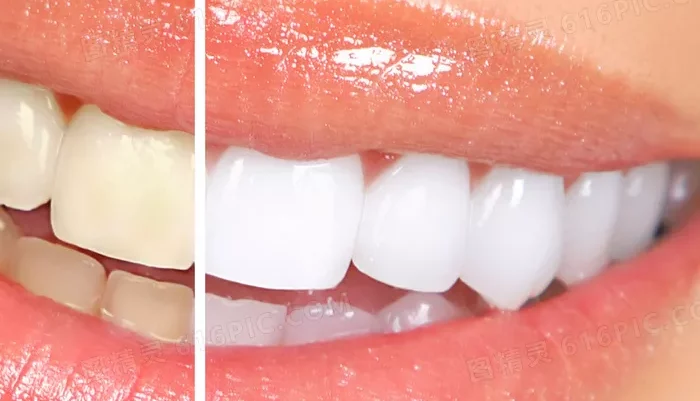Teeth whitening has become a widespread dental procedure, aiming to enhance the appearance of teeth by removing stains and restoring their natural brightness. With various methods available, such as professional treatments, over-the-counter products, and natural remedies, one particular brand, Gleam, has garnered attention. However, before embarking on any teeth whitening journey, it is crucial to understand the safety implications associated with these treatments. This article aims to provide a comprehensive analysis of the safety of Gleam teeth whitening, as well as other commonly used methods, from a dental professional’s perspective.
Understanding Teeth Whitening
Teeth whitening is a procedure that involves removing intrinsic and extrinsic stains from the teeth to achieve a brighter and more appealing smile. Intrinsic stains occur within the tooth structure, often due to aging, trauma, or consumption of certain medications. Extrinsic stains, on the other hand, affect the outer layer of the tooth enamel and are caused by factors such as smoking, coffee, tea, and red wine consumption.
Teeth whitening products work by utilizing chemicals, such as peroxide, to break down stains and restore the teeth’s natural color. These products can be categorized into two main types: professional treatments and over-the-counter products. Professional treatments, including in-office bleaching and take-home trays, are usually performed by a dentist and utilize higher concentrations of bleach. Over-the-counter products, such as whitening strips, toothpastes, and rinses, are designed for self-use and contain lower concentrations of bleach.
The Safety of Gleam Teeth Whitening
Gleam teeth whitening is a specific brand that offers teeth whitening products, typically in the form of strips or trays. Like other over-the-counter whitening products, Gleam aims to provide consumers with an easy-to-use and effective whitening solution. However, the safety of Gleam teeth whitening products largely depends on their formulation, usage instructions, and individual tooth sensitivity.
Chemical Composition
The active ingredient in most teeth whitening products, including Gleam, is peroxide. Specifically, hydrogen peroxide or carbamide peroxide is commonly used. These chemicals work by penetrating the tooth enamel and breaking down stains.
However, the concentration of peroxide is crucial in determining the effectiveness and safety of the product.
Over-the-counter products, such as Gleam, typically contain lower concentrations of peroxide compared to professional treatments. This is to ensure that consumers can safely use the product without the supervision of a dentist. However, even at lower concentrations, peroxide can cause tooth sensitivity, gum irritation, and, in rare cases, enamel erosion if used excessively or improperly.
Usage Instructions
Adhering to the usage instructions provided by Gleam is essential for ensuring the safety and effectiveness of the product.
The instructions will specify the frequency and duration of use, as well as any precautions that should be taken.
For example, it is generally recommended to avoid using whitening products more than once or twice a day, as excessive use can increase the risk of tooth sensitivity and gum irritation. Additionally, individuals with sensitive teeth or gums should use whitening products with caution and consider consulting a dentist before starting treatment.
Individual Tooth Sensitivity
Everyone’s teeth and gums are unique, and therefore, individual tooth sensitivity is a significant factor in determining the safety of Gleam teeth whitening. Some individuals may experience tooth sensitivity, gum irritation, or even enamel erosion when using whitening products, while others may not experience any adverse effects.
If you experience tooth sensitivity or gum irritation while using Gleam teeth whitening products, it is recommended to discontinue use and consult a dentist. Your dentist can assess your teeth and gums and provide personalized advice on safe and effective whitening options.
Safety Considerations for Other Teeth Whitening Methods
In addition to Gleam teeth whitening, there are various other methods of teeth whitening, each with its own set of safety considerations.
Professional Treatments
Professional teeth whitening treatments, such as in-office bleaching and take-home trays, are typically performed by a dentist and utilize higher concentrations of bleach. While these treatments can provide faster and more dramatic results compared to over-the-counter products, they also carry a higher risk of tooth sensitivity and gum irritation.
Before undergoing professional teeth whitening treatment, it is essential to consult a dentist to assess your teeth and gums and determine the most suitable treatment option. Your dentist will also provide detailed instructions on how to prepare for and care for your teeth after treatment to minimize the risk of adverse effects.
Natural Remedies
Natural remedies for teeth whitening, such as using baking soda, hydrogen peroxide, or activated charcoal, have gained popularity due to their perceived safety and cost-effectiveness. However, it is important to note that these remedies may not be as effective as professional treatments or over-the-counter products and can carry their own set of risks.
For example, using hydrogen peroxide directly on teeth can cause tooth sensitivity and gum irritation, while activated charcoal can be abrasive and potentially damage tooth enamel. Therefore, it is essential to use natural remedies with caution and consider consulting a dentist before starting treatment.
Conclusion
In conclusion, the safety of Gleam teeth whitening and other teeth whitening methods largely depends on the formulation of the product, usage instructions, and individual tooth sensitivity. While over-the-counter products, such as Gleam, are generally considered safe for most individuals, it is essential to adhere to the usage instructions provided by the manufacturer and consider consulting a dentist if you experience any adverse effects.
Related topics:

